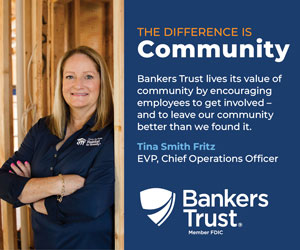Retail plan for downtown Des Moines

KENT DARR Nov 16, 2018 | 3:44 pm
3 min read time
718 wordsBusiness Record Insider, Economic Development, Retail and BusinessIn a city bent on taking its visions of the future and turning them into something tangible, a new report that hopes to map out a future of retail growth in downtown Des Moines was released today.
It is the result of a year of meetings with stakeholders — 51 to be exact, made up of developers and real estate brokers and planners and business owners, to name a few — and guided by a 16-member task force headed by Scott Sanders, Des Moines city manager and chair of the Capital Crossroads Capital Core. The Greater Des Moines Partnership played a major role in pulling all the pieces together. And, for reference, the final report leans on 15 previous reports.
Downtown DSM Retail 2030 takes a four-step approach that hopes to solve the puzzle of how, in a city that keeps on booming, to foster retail growth beyond a few notable pockets, with the East Village being the most notable.
Many of those pockets have been given district names in the report, some that many downtown observers would not have been able to identify five years ago. The plan points out that in a city on the grow, those names are subject to change. For example, a strip of Walnut Street that has sprouted a jazz club, housing for artists, residents and a few unique retailers is called West End today, occupying the southern stretches of the Western Gateway.
Connecting those districts, emerging areas stretching from east to west and north to south, is a key component of the plan. Those areas sprout what developer Jake Christensen calls lily pads — unique developments that seem to bob by themselves, with no clear link from one to the next.
Plan or no plan, sales tax revenue in downtown Des Moines has increased 25 percent since 2012, with revenues from food and beverage sales accounting for 55 percent of the growth, said Tim Leach, senior vice president of downtown development for the Partnership.
Revenues are expected to grow 40 percent by 2022.
The retail plan takes note of the city’s sparkling record of progress — low unemployment, 41 percent growth in hotel rooms, downtown population of 10,500 with nearly 2,300 new housing units on the books, development adding up to $2 billion this year.
If this retail vision works, it should “provide desirable goods, services and experiences for residents, workers and visitors,” according to the introduction.
Here’s the strategy:
Collect data: Create an up-to-date data hub with information that would help attract national and local retail. Leach said it has been 15 years since a comprehensive collection of information was gathered about downtown. A pilot study will kick off in a couple of weeks. Cost-sharing for the study has yet to be determined but will more than likely include participation by the Partnership, Operation Downtown, the Metropolitan Planning Organization and the city of Des Moines.
ID the districts: The plan calls for bolstering the identities of unique districts, such as the previously mentioned West End. Other districts identified in the report are the Arena District around the Iowa Events Center, Historic East Village, Central Business District, Western Gateway, Historic Court District and the Gray’s Lake Area, which will see the highest density of residences downtown when Hubbell Realty Co.’s Gray’s Station and Sherman Associates’ Gray’s Landing developments are completed. Hubbell plans to build a bridge that will link downtown to Gray’s Lake, and a tunnel will connect it all to a renovated Water Works Park.
Assist small businesses: Support small business by delivering resources that help them succeed. Among other things, the report recommends creating a small-business liaison to help navigate city policies and procedures and provide marketing support.
Adapt infrastructure: Establish infrastructure that supports retail efforts. Leach said efforts to improve wayfinding are never-ending. Design and maintenance standards with enforcement protocols should be established for the skywalk system, according to the report. Changes might have to be made to the Des Moines Area Regional Transportation Authority’s D-Line, which currently provides free shuttle service from east to west on weekdays and Saturdays. Improving connections, walkability and overall mobility is the goal.
The big picture is to make “sure that this is an all-encompassing, intentional strategic plan to grow retail in downtown Des Moines,” Capital Crossroads Director Nikki Syverson said.









